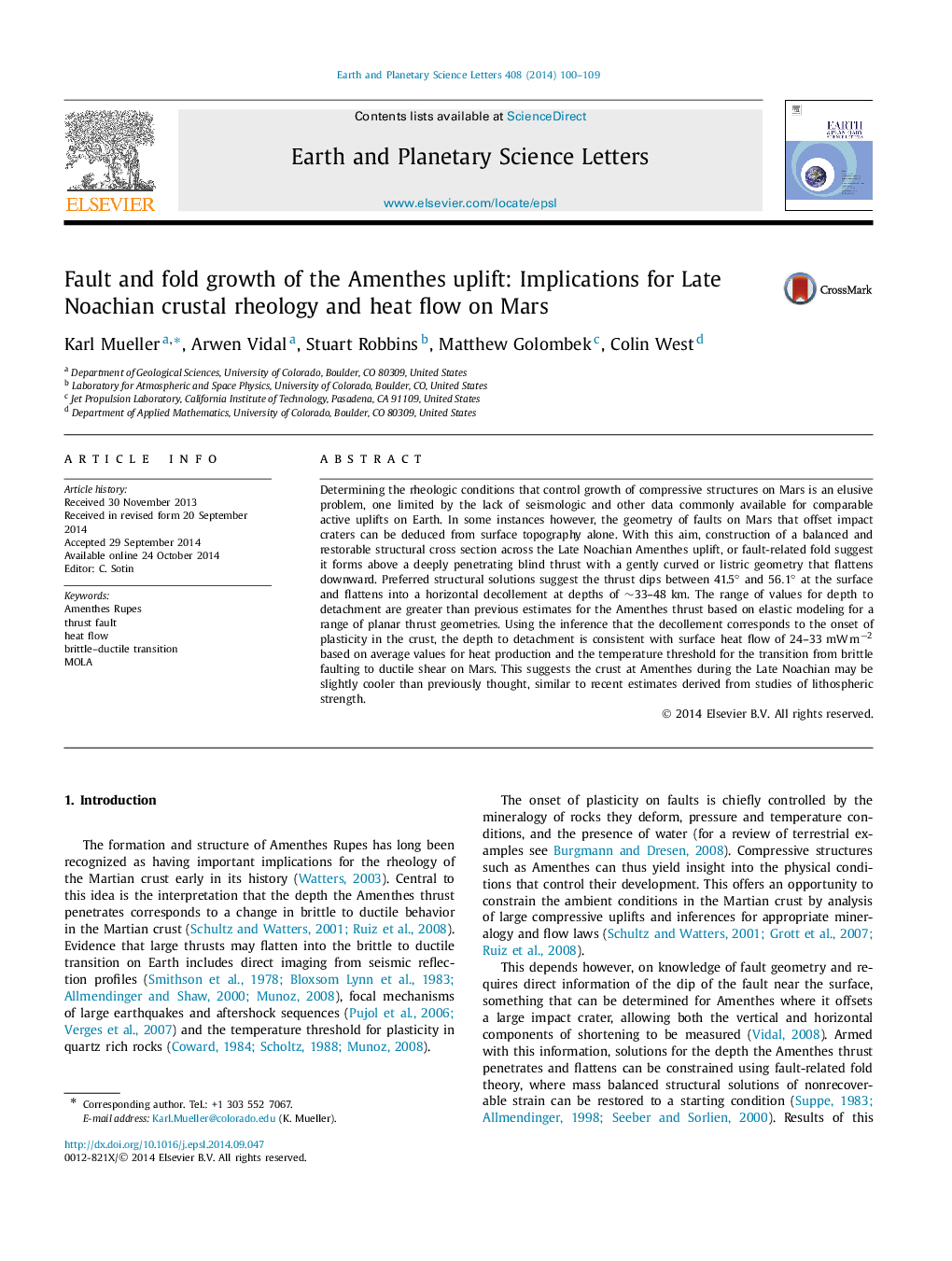| Article ID | Journal | Published Year | Pages | File Type |
|---|---|---|---|---|
| 6428681 | Earth and Planetary Science Letters | 2014 | 10 Pages |
â¢We develop balanced cross sections of the Amenthes uplift.â¢Structural solutions suggest the Amenthes thrust penetrates deeply into the crust.â¢The Amenthes thrust grows upward from the base of the brittle crust.â¢Surface heat flow is consistent with recent studies based on lithospheric strength.
Determining the rheologic conditions that control growth of compressive structures on Mars is an elusive problem, one limited by the lack of seismologic and other data commonly available for comparable active uplifts on Earth. In some instances however, the geometry of faults on Mars that offset impact craters can be deduced from surface topography alone. With this aim, construction of a balanced and restorable structural cross section across the Late Noachian Amenthes uplift, or fault-related fold suggest it forms above a deeply penetrating blind thrust with a gently curved or listric geometry that flattens downward. Preferred structural solutions suggest the thrust dips between 41.5° and 56.1° at the surface and flattens into a horizontal decollement at depths of â¼33-48 km. The range of values for depth to detachment are greater than previous estimates for the Amenthes thrust based on elastic modeling for a range of planar thrust geometries. Using the inference that the decollement corresponds to the onset of plasticity in the crust, the depth to detachment is consistent with surface heat flow of 24-33 mWmâ2 based on average values for heat production and the temperature threshold for the transition from brittle faulting to ductile shear on Mars. This suggests the crust at Amenthes during the Late Noachian may be slightly cooler than previously thought, similar to recent estimates derived from studies of lithospheric strength.
